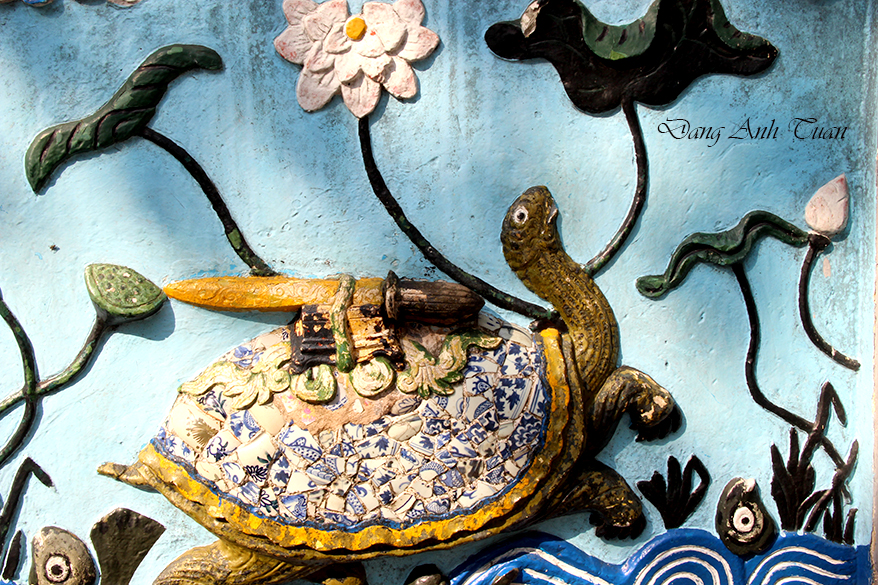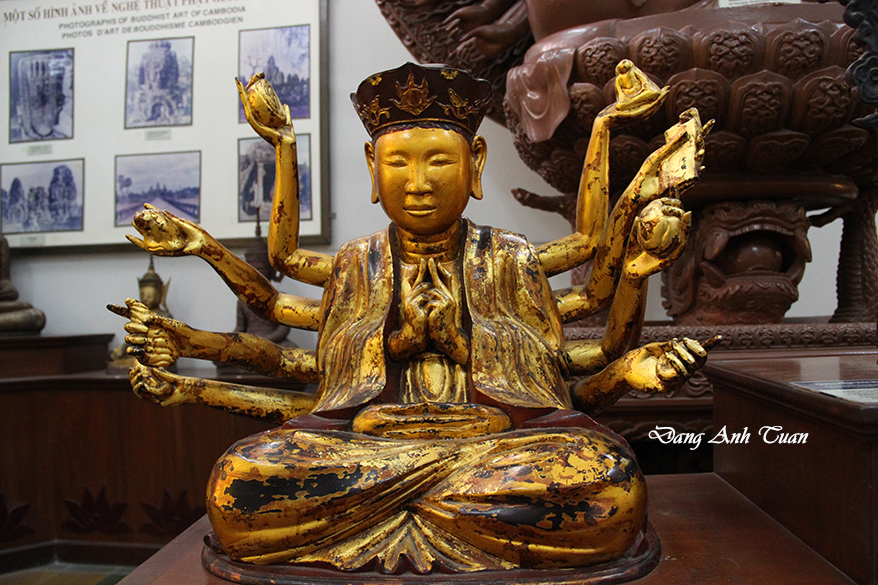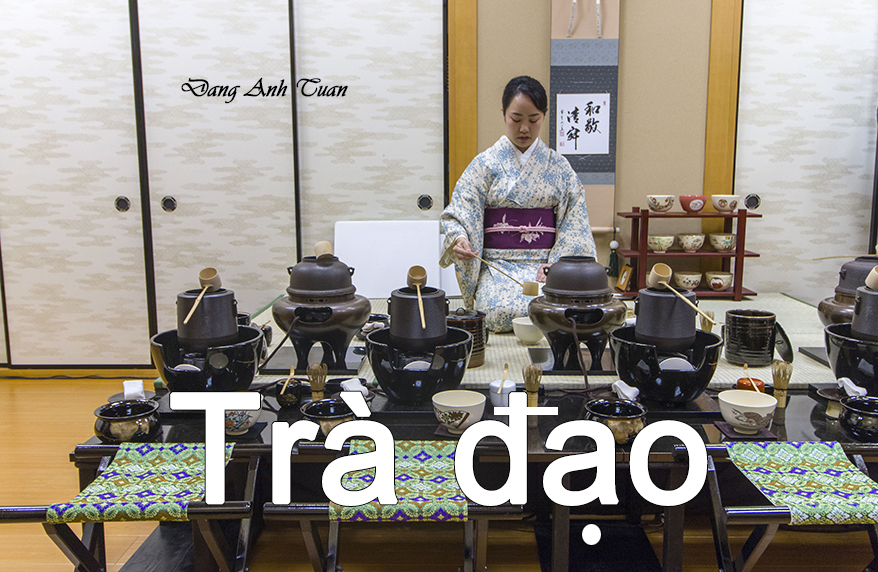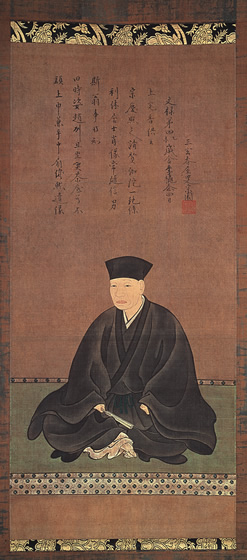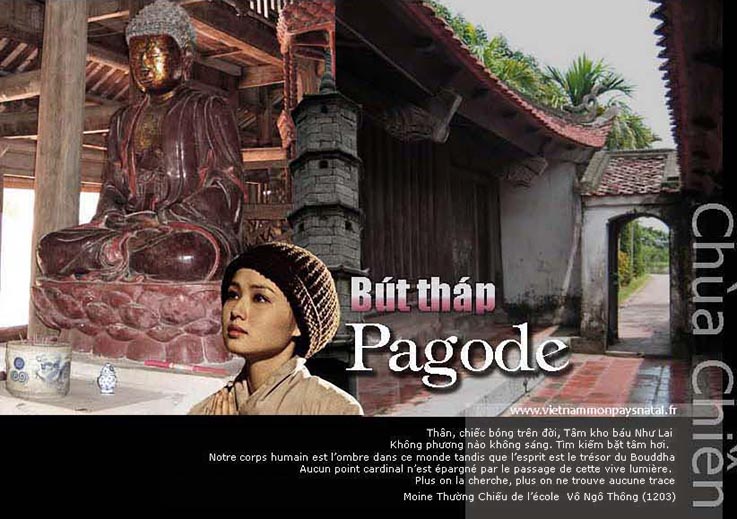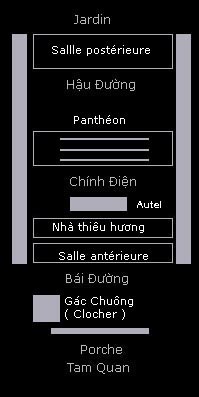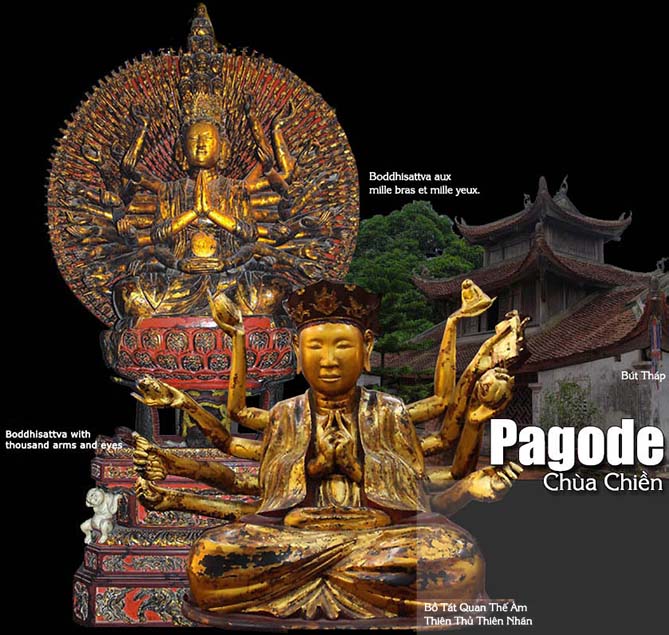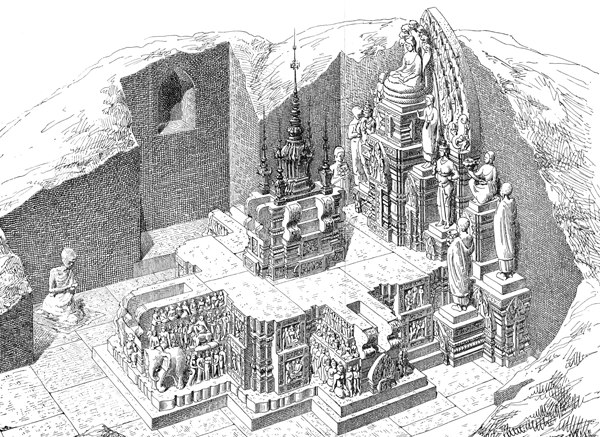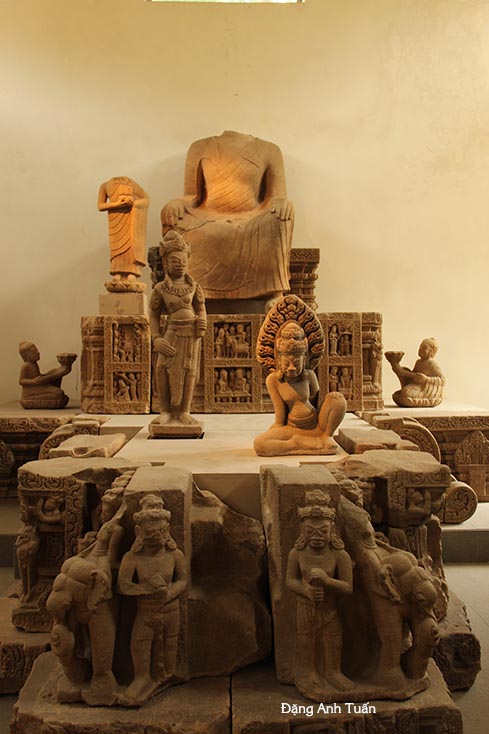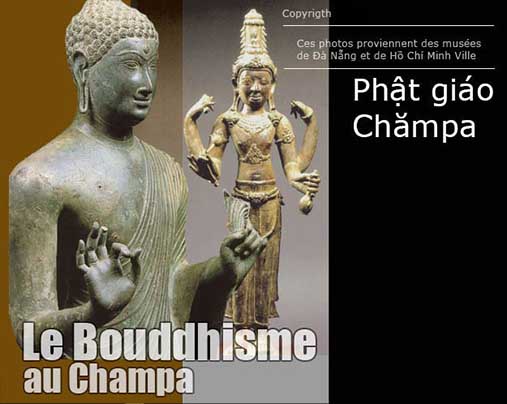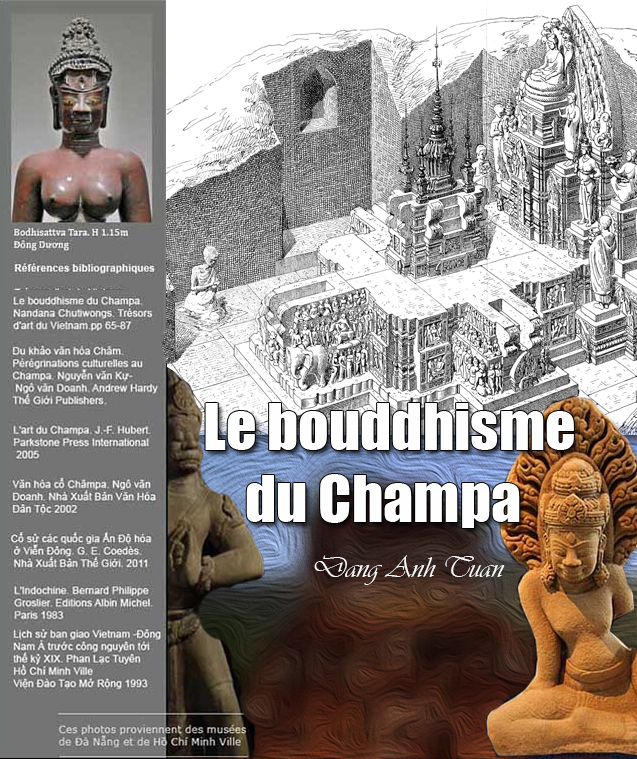Turtle (Qui)
Version vietnamienne
Version française
Galerie des photos
In the treasure trove of Vietnamese mythology, the sea god is often seen transforming into a sea turtle. This giant aquatic species is rare in our country, particularly the softshell turtle of the Red River (sông Hồng), and it is one of the four animals with supernatural power (dragon, unicorn, turtle, phoenix). Compared to the other three animals, the turtle is the only true animal existing in nature. Moreover, it has a longer lifespan and can live for a long time without food. That is why it is synonymous with escaping the hectic life and eternal longevity.
In the spiritual realm, the turtle is considered the symbolic animal of the union of heaven and earth or Yin and Yang. Its abdomen is so flat that it represents the earth (Yin), and its shell represents the dome of the sky (Yang). It is often regarded by the Vietnamese as a sacred quadruped capable of making prophecies and is sanctified in their spirit. They are one of the peoples living close to the rivers and seas of Southeast Asia and in the south of the Yangzi River. This is why the French researcher Jean Przyluski concluded in his studies that one often sees in their legends heroes or sacred forces (or spirits in the form of fish, turtles, reptiles, turtles, etc.) coming from the waters, helping kings to consolidate their nation or resist invaders.
On the other hand, these sacred animals are not found in the legends of the peoples living on the continent such as China or India. This is why the appearance of the turtle is noted two or three times in Vietnamese legends. For the first time, the turtle is mentioned in the book titled « Extraordinary Stories of Lĩnh Nam » by Trần Thế Pháp, written in Han characters and probably published during the Trần dynasty.
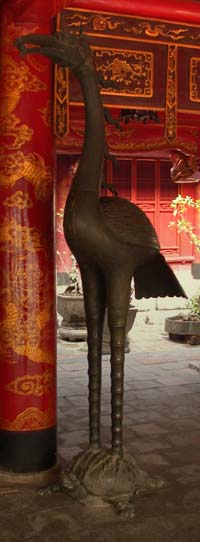
After conquering the Văn Lang kingdom of the Hùng kings, Thục Phán decided to take the title An Dương Vương and decided to build the citadel in the Việt Thường territory. But he did not succeed in completing his project because the citadel kept eroding several times. One day, on the surface of the sea, appeared a golden turtle claiming to be the ambassador Thanh Giang. It was able to speak human language fluently and predict the future.
The king succeeded in building the citadel after the golden turtle suggested a stratagem to kill the monster Bạch Kê Tinh (a white rooster that managed to transform into a human being after a thousand years). This citadel was quite large and was called « the spiral citadel » because of the presence of nine spirals of earth. Before bidding farewell to the king, the Golden Turtle advised the king to govern with wisdom and virtue as this would prolong his reign. Then it gave him a claw which the king used as the trigger of his crossbow and returned to the sea.
Thanks to this magical weapon, the king managed to keep the citadel and resist the invading army of Zhao Tuo (or Triệu Đà). But An Dương Vương was later a victim of Zhao Tuo’s cunning and lost his kingdom by agreeing to let his daughter Mỵ Nương marry Trọng Thủy, the son of his adversary. The Golden Turtle also helped King Lý Thái Tông reclaim his throne after the death of his father, King Lý Thái Tổ.
Upon ascending the throne, Lý Thái Tông soon had to abandon the capital and take refuge in a cave in Tuyên Quang because his younger brothers had revolted to dispute the throne with him. The Golden Turtle appeared in his dream to let him know that it would help him reclaim the throne. After quelling the revolt, the king remembered the turtle’s merit and did not hesitate to grant it the title of « Minh Phúc Đại Vương. » To this day, there still exists a shrine dedicated to this Golden Turtle in the village of Nghiêm Sơn in Tuyên Quang province.
The Golden Turtle was also mentioned during the Ming (or Chinese) invasion at the beginning of the 15th century. A fisherman named Lê Thân once retrieved a sword and gave it to Lê Lợi, the future king of the Later Lê dynasty, during his uprising against the Chinese invaders. After driving out the Ming, King Lê Lợi one day took a dragon boat ride around Tã Vọng lake (known today as the « Lake of the Returned Sword »).
In the middle of the lake, a huge turtle suddenly emerged from the surface of the water. The king found this appearance strange. He ordered his subordinates to slow down the royal boat. The turtle approached him and said in its human voice: « Lord, you must return the sword to me so that I can bring it back to the Dragon King (*). He is the one who gave you this sword to pacify the country. » Just as the king drew his sword, the golden turtle opened its mouth, snatched it with astonishing speed, and immediately disappeared under the water.
The golden turtle is still considered in Vietnamese legends as the praetorian guard of the Dragon King, the father of the Vietnamese people, and it is entrusted with protecting the Vietnamese. From that day on, the Tã Vọng lake became Hồ Hoàn Kiếm lake (or the Lake of the Returned Sword).
In popular beliefs, it is common to find a pair of cranes or phoenixes standing on the shells of turtles arranged on each side of the incense burner in temples and communal houses. It is a pair of animals reflecting the role of the harmony between Yin and Yang. In the Temple of Literature (Văn Miếu) in Hanoi, there are 82 turtle statues carrying the steles of laureates on their shells.
It is a way to immortalize the names of people who have obtained the title tiến sĩ (doctorate degree) as well as those of their villages where they were born, because these continue to be honored through generations and years, and they symbolize the strength they possess since they are men of talent and the source of life for the nation. No king thinks of neglecting the recruitment of these talented men because a gushing source is the strength of a country. A drying-up source weakens it.
We are accustomed to considering the turtle as a sacred quadruped. That is why when someone has the chance to encounter it on the path, it is said that they are lucky. It is called by the name « Cụ (Uncle) » to show respect. We pity its fate through the following saying:
Thương thay cái kiếp con rùa
Lên đình đội hạc, xuống đình đội bia.
We keep lamenting the fate of the turtle
Forced to carry cranes in communal houses and steles elsewhere.
Currently, this giant aquatic species has been classified as critically endangered on the IUCN Red List since 2006 and is known by the scientific name « Rafetus swinhoei. » It is a softshell turtle species living in the Yangtze River (China) or the Red River of Vietnam.
After the death of the returned sword lake turtle, there are currently 4 individuals, one of which is very old and male living in China, the second (a female confirmed through gene analysis) and the third (under recovery) are in Đồng Mô Lake (Ba Vì), and the last lives in nearby Xuân Khanh Lake (Sơn Tây). The Vietnamese organization responsible for species protection holds hope of successful fertilization if the individual recovered at Đồng Mô or Xuân Khanh Lake is a male; otherwise, this species will become extinct in the future.

